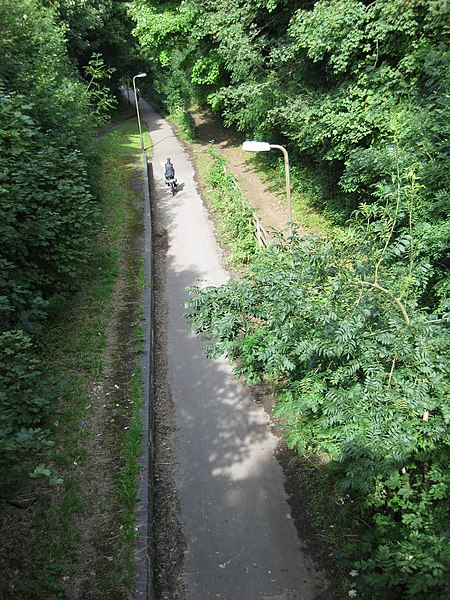A shared-use path, mixed-use path or multi-use pathway is a path which is "designed to accommodate the movement of pedestrians and cyclists". Examples of shared-use paths include sidewalks designated as shared-use, bridleways and rail trails. A shared-use path typically has a surface that is asphalt, concrete or firmly packed crushed aggregate. Shared-use paths differ from cycle tracks and cycle paths in that shared-use paths are designed to include pedestrians even if the primary anticipated users are cyclists.
A shared-use path in Budapest, with a typical European shared use sign
Cyclists are often permitted to use rail trails and bridleways, such as this rail trail in Germany.
A segregated path in Birmingham, England. Note the tactile pavings to delianate the pedestrian and cyclist sections of the path.
Part of the Milton Keynes redway system runs along the disused track bed of the former Wolverton to Newport Pagnell Line, now a rail trail.
A bridle path, also bridleway, equestrian trail, horse riding path, ride, bridle road, or horse trail, is a trail or a thoroughfare that is used by people riding on horses. Trails originally created for use by horses often now serve a wider range of users, including equestrians, hikers, and cyclists. Such paths are either impassable for motorized vehicles, or vehicles are banned. The laws relating to allowable uses vary from country to country.
Bridleway in Hillingdon, England
A horse riding path in Oulu, Finland
Marker for the National Horse Trail in Australia.
Cyclists on a bridleway in England








